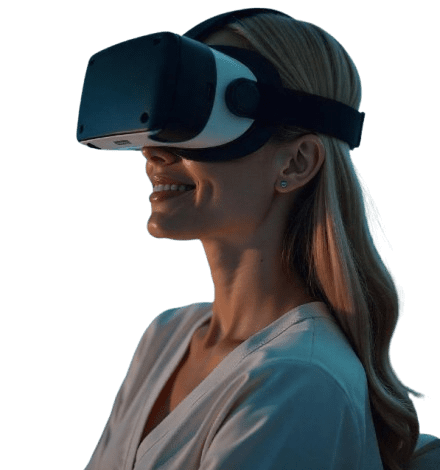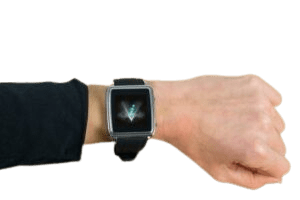VR Vision: Dive into the World of Virtual Reality

Virtual Reality (VR) technology enhances the simulation of environments by offering 360-degree immersion for the user. The applications of VR are diverse, ranging from gaming to healthcare, and from education to engineering. In this article, you will learn more about the fascinating world of VR: its history, components, the experiences it offers, and its potential developments.
Virtual Reality Overview
The earliest development of VR technology can be traced back to the 1960s, when Ivan Sutherland created the first Head-Mounted Display (HMD) and developed the foundational concepts of VR. However, it wasn’t until the 1990s that VR devices like the Nintendo Virtual Boy and Oculus Rift gained significant attention.
Key Components of VR Technology
A typical VR setup includes several crucial components:
- Head-Mounted Display (HMD): Provides stereoscopic images for the user and tracks spatial locations.
- Motion Controllers: Allow users to interact with virtual spaces.
- Tracking Systems: Track the user’s movements to provide a fully immersive experience.
- Computer or Gaming Console: Processes data and generates the virtual environment.
The VR Experience and Immersion
VR provides an immersive experience that traditional media platforms cannot match. By using visual, auditory, and even tactile cues, VR allows the user to enter a convincingly virtual world. VR has been shown to evoke emotions and reactions that are as real as live experiences, making it an invaluable tool in various fields.
How VR is Used in Different Industries
From gaming to healthcare, VR is transforming numerous industries:
- Gaming: VR takes video gaming to a new level by immersing players in the game world.
- Education: VR enhances learning by providing interactive and immersive educational experiences.
- Healthcare: VR is used for pain management and treating mental health disorders.
- Entertainment: VR is used in interactive movies, concerts, virtual tours, and other experiences.
Consumer Benefits of Virtual Reality
VR technology offers many benefits for users:
- Enhanced Entertainment: Gamers and movie lovers enjoy a new level of immersion with VR.
- Improved Accessibility: VR allows access to content that may be otherwise difficult or costly to obtain.
- Enhanced Learning: Studies show that VR offers an engaging educational environment and serves as an effective learning tool.
- Better Health Outcomes: VR is used to treat phobias, PTSD, and other mental health disorders.
Disadvantages of VR Technology
While VR is an impressive technology, it faces several challenges:
- High Costs: High-quality VR headsets and computers can be expensive.
- Limited Content: Although VR content is growing, it still lags behind traditional media in terms of availability.
- Motion Sickness: Some users experience motion sickness when using VR, though it can be mitigated with proper device setup and precautions.
The Future of Virtual Reality
Looking ahead, VR is expected to evolve in terms of both hardware and software, as well as content production. The following are some potential future developments:
- Improved Hardware: Expect lighter, more comfortable, and cheaper VR headsets.
- Wider Adoption: VR will see broader use in sectors like education, healthcare, and entertainment.
- Expanded Content: The variety and scope of VR experiences will continue to grow.
Popular VR Headsets
Some of the most popular VR headsets include:
- Oculus Quest 2: A wireless VR headset that connects to a computer or gaming console, offering a wide library of games.
- HTC Vive Pro 2: One of the latest fully immersive VR headsets with a high-resolution display.
- Valve Index: A premium VR headset with superior ergonomics and functionality, ideal for extended use.
VR in Gaming
VR has changed the way games are played. In genres like first-person shooters and role-playing games (RPGs), the VR experience immerses players to the point where they feel as if they are the character.
VR in Education
Virtual Reality has revolutionized teaching and learning by making education highly interactive. Students can virtually walk through historical sites, conduct experiments online, and customize their learning experiences.
VR in Healthcare
VR is applied in healthcare for pain control, physiotherapy, and the treatment of mental health conditions. Patients can undergo therapy through simulations, and doctors can practice complex procedures in a safe virtual environment.
VR in Entertainment
The entertainment industry is embracing VR for new, immersive experiences such as virtual reality movies, concerts, and interactive experiences that were previously unimaginable.
Virtual Reality for Remote Working and Team Interactions
As telecommuting becomes more common, VR is playing an important role in remote interactions, including virtual meetings. VR allows users to feel as though they are in the same room, even when they are in different locations, making remote collaboration more effective.
Conclusion
Virtual Reality is a groundbreaking technology that is poised to transform multiple fields in the near future. Whether it’s gaming, education, healthcare, or entertainment, VR is changing the way users interact with applications and content. As VR technology continues to evolve, we can expect more effective and widespread usage in the future.




